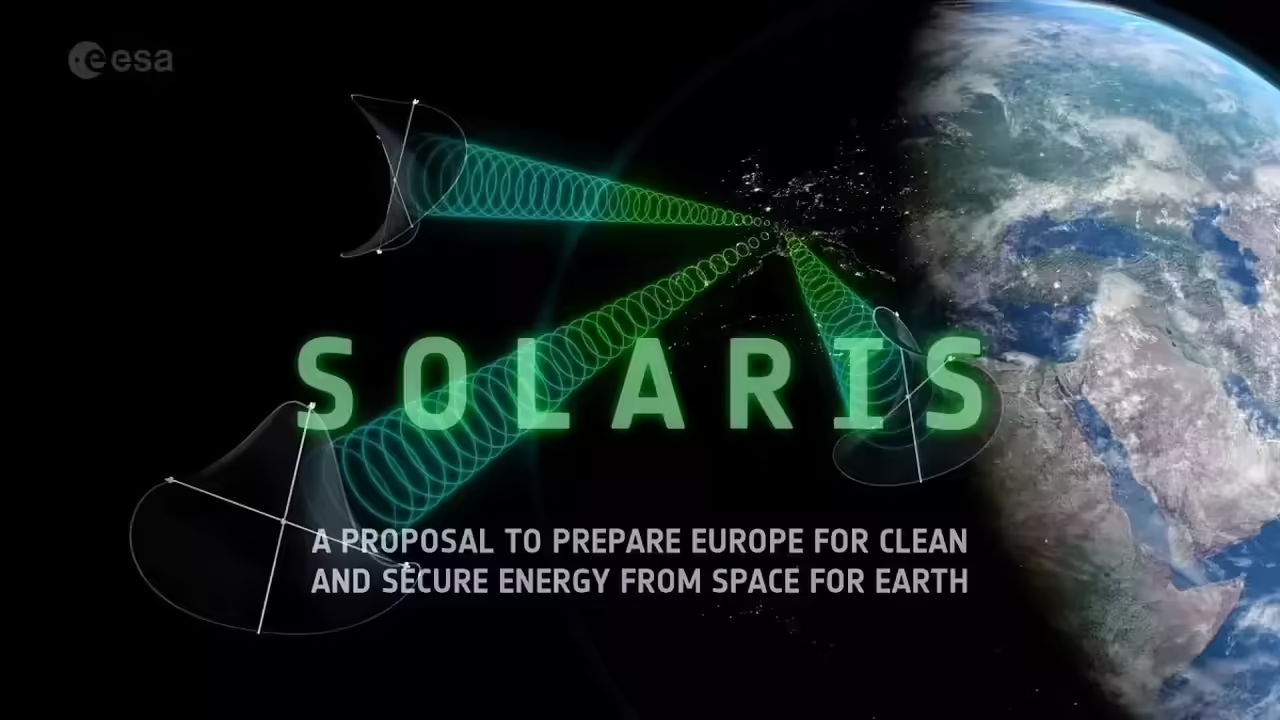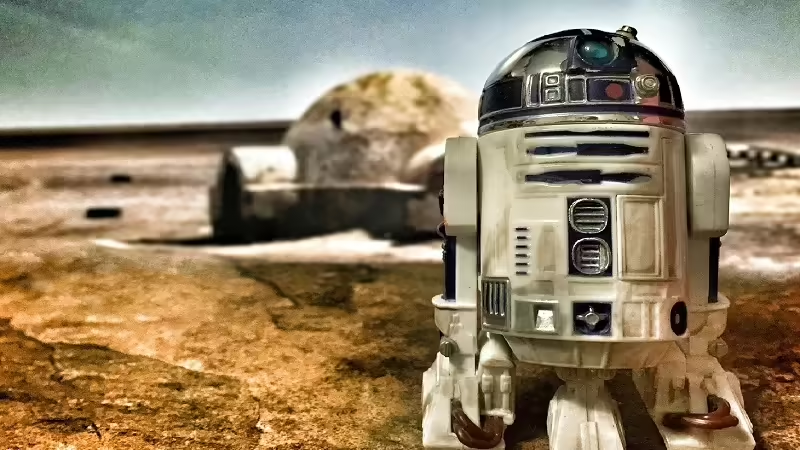
In recent years, the growing interest in the search for sustainable and renewable energy sources has led to significant advances in innovative technologies. One of the most exciting developments in this field is the SOLARIS space station, a revolutionary energy source that promises to change the way we obtain and use energy on Earth.
The SOLARIS space station is an ambitious research and development project in the field of orbital solar power. Designed and built by an international consortium of scientists, engineers and space agencies, SOLARIS is aimed primarily at capturing the sun’s energy in space and transmitting it efficiently to Earth.
The SOLARIS space station consists of an array of highly efficient solar panels arranged in a modular structure. These solar panels are designed to capture solar radiation and convert it into electricity using highly advanced photovoltaic cells. The location in space allows the solar panels to receive an uninterrupted amount of sunlight, making them considerably more efficient than solar systems on Earth.
One of the greatest advantages of SOLARIS is its ability to transmit power generated in space back to Earth wirelessly. Using microwave or high-power laser technology, the space station can send the captured energy to receiving stations on the Earth’s surface. This power transmission is carried out safely and efficiently, without losing much of the energy in the process.
The SOLARIS space station offers several significant advantages over traditional energy sources. First, by capturing solar energy in space, SOLARIS is not subject to the limitations associated with weather conditions and the availability of sunlight on Earth. This makes it a reliable and constant source of energy, capable of providing electricity 24 hours a day, 7 days a week.
In addition, the solar energy captured by SOLARIS is abundant and clean. By using renewable energy and emitting no greenhouse gases or other pollutants during its generation, SOLARIS contributes to reducing dependence on fossil fuels and mitigating climate change.
While the SOLARIS project is still in its early stages of development, it is expected to have a significant impact on the future of energy. The space station has the potential to supply electricity to remote and hard-to-reach areas around the world, as well as to satellites and space missions that require a reliable power source.
However, large-scale deployment of SOLARIS still presents technical and economic challenges. Construction and maintenance of the space station require considerable investment, and additional advances in technology and regulation will be needed to make the project more affordable and cost-effective. In addition, safety and space debris management are major concerns that must be addressed to ensure the long-term viability of the SOLARIS space station.
Despite these challenges, the potential of the SOLARIS space station as a revolutionary source of energy is undeniable. Its ability to capture solar energy in space and efficiently transmit it to Earth has the potential to transform the way we obtain energy. In addition, the technology used in SOLARIS could spur research and development of more efficient and cost-effective solar power systems on Earth.
The SOLARIS space station represents an exciting step forward in the exploration and harnessing of sustainable and renewable energy sources. As energy demand continues to increase and environmental challenges become more pressing, the search for innovative solutions such as SOLARIS becomes increasingly important.
As technology advances and technical and economic challenges are overcome, we can expect the SOLARIS space station to play a pivotal role in the transition to a cleaner, more sustainable energy future. The ability to capture and transmit solar energy from space has the potential to change the way we generate and use electricity, paving the way for a greener, more environmentally conscious society.
What is the SOLARIS space station and how does it work?
The SOLARIS space station is an international project that aims to study the Sun and its effects on the Earth and the solar system. The station consists of a central module and four scientific laboratories orbiting the Sun at a distance of 0.5 astronomical units (AU), i.e. half the distance between the Earth and the Sun. The SOLARIS space station is solar-powered and is equipped with communication, navigation, thermal control and life support systems for the astronauts who inhabit it. The SOLARIS space station enables high-resolution solar observations and experiments in solar physics, astrophysics, biology and space medicine. The SOLARIS space station also contributes to improving space weather prediction and protecting ground and space infrastructures from the effects of solar storms.
Energy without limits: the potential of SOLARIS to power the Earth
SOLARIS is an innovative project that seeks to harness the sun’s energy to generate clean, renewable electricity. The goal is to build a solar thermal power plant in the Atacama Desert in Chile that can produce up to 10 gigawatts of power. This energy would be transmitted via high-voltage cables to different countries in South and Central America, and even to Europe and Africa.
The advantage of SOLARIS is that it uses a solar concentration system, which consists of thousands of mirrors that reflect sunlight onto a central tower, where a fluid is heated and then converted into steam. The steam drives a turbine that generates electricity. This process is more efficient and economical than photovoltaic solar panels, which only use part of the solar spectrum.
SOLARIS also has a thermal storage system, which allows excess heat to be stored during the day and used to continue producing electricity at night or when there are clouds. This ensures constant and reliable energy generation without relying on fossil fuels or emitting greenhouse gases.
SOLARIS is an ambitious but feasible project that could change the global energy landscape and contribute to the fight against climate change. With SOLARIS, limitless energy is closer to becoming a reality.
Environmental benefits: how SOLARIS could drive the clean energy transition
The SOLARIS space station has the potential to drive the transition to clean and sustainable energy sources in a number of ways. Here are some key environmental benefits that could be realized with the successful development and deployment of SOLARIS:
Renewable and abundant energy – SOLARIS harnesses solar energy, a renewable and abundant source of energy. By capturing solar radiation in space, the space station is not subject to the limitations of sunlight availability or variability on Earth. This means it can provide constant, reliable power 24 hours a day, 7 days a week, helping to reduce our dependence on fossil fuels and non-renewable energy sources.
Reduced greenhouse gas emissions: Generating electricity from conventional energy sources, such as fossil fuels, emits a significant amount of greenhouse gases, contributing to global warming and climate change. By utilizing the solar energy captured by SOLARIS, the need to burn fossil fuels would be reduced, resulting in reduced greenhouse gas emissions and a lower carbon footprint.
Reduced air and water pollution: Power generation from conventional sources can also be associated with air and water pollution due to emissions of pollutants and waste generated by the extraction and processing of fossil fuels. By obtaining energy from SOLARIS, this source of pollution would be eliminated, resulting in cleaner and healthier air and water for ecosystems and communities.
Reduced deforestation and impact on ecosystems: Space solar power can reduce the need to generate electricity from sources that require large infrastructure projects, such as building hydroelectric dams or burning biomass. These projects often involve deforestation of natural areas and can have a negative impact on ecosystems and biodiversity. SOLARIS offers a clean, non-invasive alternative that minimizes the impact on terrestrial ecosystems.
Access to energy in remote areas: SOLARIS could provide a reliable and sustainable energy source in remote and hard-to-reach areas that currently rely on expensive or unreliable energy sources. This can improve the quality of life of communities in these regions by providing access to clean and affordable electricity, thereby boosting socioeconomic development and reducing the energy gap.
Integrating SOLARIS into the global energy grid: challenges and opportunities
Integrating the SOLARIS space station into the global energy grid poses both challenges and opportunities. Some key aspects related to this integration are explored here:
Challenges:
Infrastructure and transmission: transmitting power from space to Earth involves the development of an adequate and efficient infrastructure. Advanced wireless transmission technologies would be required, as well as the construction of strategically located ground receiving stations to capture and convert the transmitted power. These technical and logistical challenges would require significant investment and international collaboration.
Economic costs: Building and launching a space station such as SOLARIS involves high development, manufacturing and maintenance costs. In addition, the ground infrastructure needed to receive and distribute power would also be expensive. The challenge lies in making this technology economically viable and competitive with other renewable energy sources.
Space debris management: As more space projects are implemented, space debris management becomes a major challenge. The SOLARIS space station would also generate debris and components that would require proper disposal or recycling to minimize environmental impact and avoid space debris accumulation.
Opportunities:
Inexhaustible and constant energy: Solar energy captured by SOLARIS in space is virtually inexhaustible and constantly available. This provides a reliable and continuous source of energy that can complement other intermittent renewable energy sources, such as wind or ground-based solar power, helping to stabilize the energy grid.
Emissions reduction and climate change mitigation: The integration of SOLARIS into the global energy grid would enable cleaner electricity generation by reducing dependence on fossil fuels. This would result in a significant decrease in greenhouse gas emissions, which would contribute to climate change mitigation and the achievement of emission reduction targets.
Energy independence and security: By diversifying the source of energy, SOLARIS integration could help nations achieve greater energy independence. By reducing dependence on imported fossil fuel sources, countries could strengthen their energy security and reduce their vulnerability to price fluctuations and geopolitical volatility.
Technology boost and industrial development: The integration of SOLARIS into the global energy grid would spur research and development of more efficient and advanced solar technologies. This would generate opportunities for industrial growth and job creation in related sectors, such as solar panel manufacturing, space engineering, and power transmission infrastructure.







